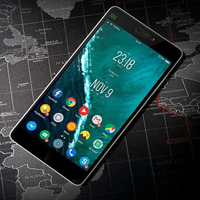Prevalence, pattern and factors associated with problematic phone use among youths in Kano Metropolis, Nigeria

All claims expressed in this article are solely those of the authors and do not necessarily represent those of their affiliated organizations, or those of the publisher, the editors and the reviewers. Any product that may be evaluated in this article or claim that may be made by its manufacturer is not guaranteed or endorsed by the publisher.
Authors
Mobile phones have increasingly penetrated our societies with huge benefits accrued from its use. A rapidly growing number of youths are acquiring the cell but the extent to which usage constitutes a problem in their daily lives has not been studied much in northern Nigeria. This study assessed the prevalence, pattern, perceived effect and factors associated with problematic phone use among youths in Kano metropolis. Using a descriptive cross-sectional design, 320 youths aged 15-24 years old who were available on social media sites (Twitter, Facebook and WhatsApp) were studied. A pretested online questionnaire was sent to respondents via the different social media and entries collected for a month. Data was analyzed using SPSS vs 21.0. Majority (N=210; 65.6%) of the study participants were habitual users, while 10.3% (n=33) were problematic users. An additional 10% (n=32) were found to be at risk of problematic phone use. Three quarters of the respondents (n=238; 74.4%) spent five or more hours on their phones per day, more than half (n=175; 54.7%) were awakened at least once in the night and majority (n=230; 71.8%) used their phones in inappropriate situations. Reported symptoms were mainly physical symptoms (n=144; 45.0%) such as headache, ear warmth and injuries. Problematic phone use was not associated with sociodemographic factors, however was associated with excessive usage patterns and reported negative symptoms. There is a relatively high prevalence of problematic phone use with reported physical and social consequences among youths in Kano metropolis. Public health strategies that include parents and families would go a long way to limit excessive use of mobile phones among youths.






